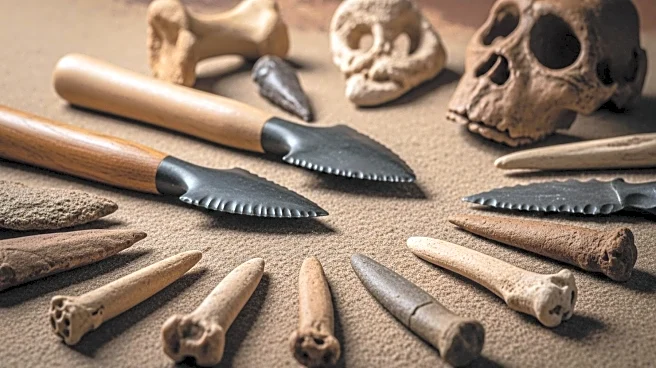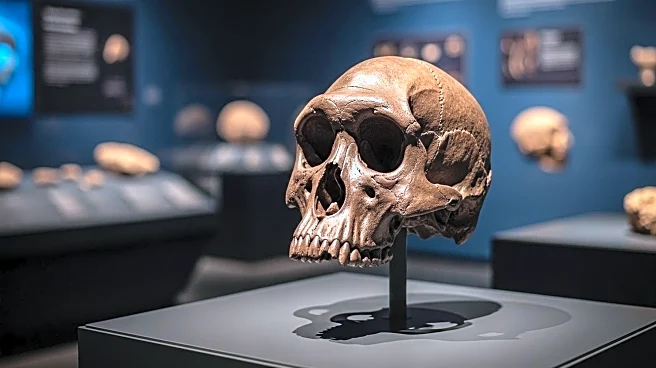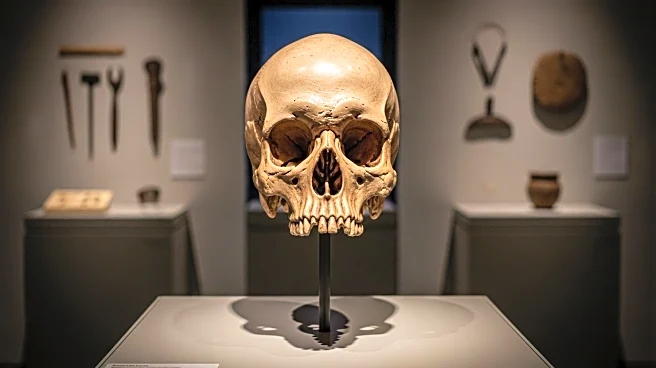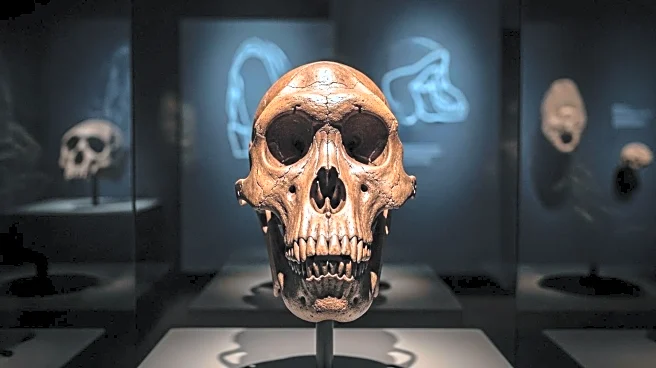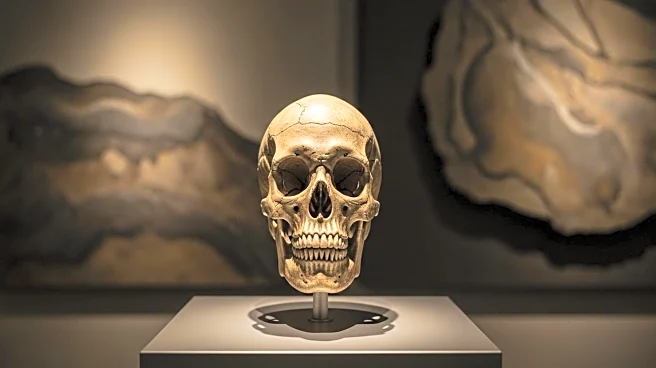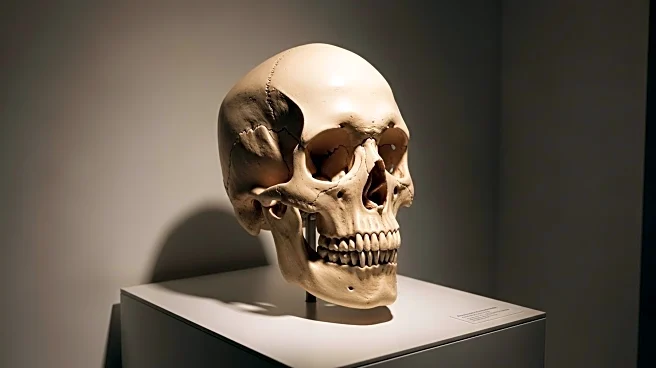What is the story about?
What's Happening?
A recent study has revealed that a million-year-old skull found in China could significantly alter the current understanding of human evolution. The skull, known as Yunxian 2, was initially thought to belong to Homo erectus. However, modern reconstruction techniques have shown features more closely aligned with Homo longi and Homo sapiens. This suggests that human ancestors may have diverged into distinct groups 400,000 years earlier than previously believed, and possibly in Asia rather than Africa. The research, published in the journal Science, utilized advanced CT scanning and virtual reconstruction to model the skull, which was then compared to over 100 other specimens. The findings have sparked debate among experts, with some cautioning that the conclusions may be disputed due to ongoing uncertainties in the human evolutionary timeline.
Why It's Important?
The implications of this discovery are profound, as it challenges the long-held belief that early human evolution primarily occurred in Africa. If the findings are accurate, they suggest that East Asia played a crucial role in the development of early hominins, including Neanderthals and Homo sapiens. This could lead to a reevaluation of the migration and evolutionary patterns of early humans. The study also highlights the complexity of human evolution, suggesting that our understanding of the timeline and geographical spread of early human species is still incomplete. This research could pave the way for further studies that may uncover additional evidence supporting or refuting these claims, potentially reshaping the narrative of human origins.
What's Next?
The study's findings are likely to prompt further research and debate within the scientific community. Experts may seek additional fossil evidence or genetic data to corroborate or challenge the conclusions drawn from the Yunxian 2 skull. As the research community continues to explore the implications of this discovery, it may lead to new archaeological expeditions in Asia and other regions to uncover more evidence of early human evolution. The ongoing discourse will likely focus on integrating these findings into the broader context of human evolutionary history, potentially influencing future studies and educational narratives about human origins.
Beyond the Headlines
This discovery raises important questions about the methodologies used in paleoanthropology and the interpretation of fossil evidence. It underscores the need for interdisciplinary approaches, combining advanced technology with traditional archaeological methods, to gain a more comprehensive understanding of human evolution. The study also highlights the dynamic nature of scientific inquiry, where new evidence can challenge established theories and lead to significant paradigm shifts. As researchers continue to investigate the complexities of human ancestry, this discovery may inspire a reevaluation of other fossil records and prompt a broader reconsideration of the factors that influenced human evolution.
AI Generated Content
Do you find this article useful?




